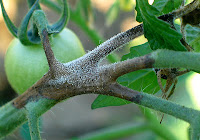Irish Garden Books Review
Spring is here and that means the cool, sweet,
hopeful green season is back.
“Green”
seems to be everywhere.
Emerald Green is the Pantone "Color of the Year."
The color arbiter claims it's rejuvenating, multi-faceted, harmonious, and lush.
You can’t help but register that everybody – from corporations to government to media – are keen to profess their new green initiatives.
Why even the newly-appointed Pope Francis is named for St. Francis - patron saint of animals and the environment.
This green style sparked a green review on my part.
When I
think green – real honest-to-goodness, wearin’ of the green – I think of
Ireland.
The Emerald Isle.
So the books for this garden visit will demonstrate why this
island is truly a gardener’s green paradise.
And St. Patrick's Day was fleeting. I was too busy planting my peas, after all.
Gardens of Ireland, by Marianne Heron and photography by Seven
Wooster takes the reader on an Irish garden tour organized by region: The South and
South East; Central, South West, and the North, followed by a two-page index of
“Where to Visit,” that includes the hours of visitation, travel directions, and
contact information.
Ireland’s rain and temperate climate is ideal for growing
the widest range of plants in its latitude -- not to mention the Gulf Stream
that allows sub-tropical plants to thrive along the coasts. And you thought the Irish green thumb was the
magic sprinkled in the garden by all those fairies and leprechauns!
Ireland boasts many private gardens whose owners are happy
to show off their horticulture triumphs.
Today there are also more than 100 gardens that are open the
public.
The book is richly illustrated with luscious photographs –
some are full-page illustrations of the gardens that are punctuated with
bright, sharp colors or misty landscapes along with the home, folly, or
castle. Others are whimsical notations
that truly provide a sense of place such as the willow dragon of Ballymaloe or
the flock of hens there, or the peacocks at Kilmokea, or the feline-looking
stone creature on the Dodo Terrace at the Mount Stewart garden.
The text is just the right mix of garden history and a
description or inventory of the plants in the garden – it reads as if you are
walking through the site. The author writes, “Drifts of white willow herb
waving beyond precision-clipped box hedges…” or “Bonet’s plan features two long
ponds stretching a dramatic 550 feet towards a distant avenue of limes, beyond
them are the Cascades, a series of tumbling water features or stops, hidden by
a ha-ha…”
You get the idea of how intriguing
and fun this is to read! The famous
Irish sense of humor that is everywhere evident.
The overview of Larchhill reads, “A rural
Arcadia where extraordinary follies and rare pigs in palaces feature in
Ireland’s only ferme ornee or ornamental farm: a unique survivor of gardening
history.”
How can you not be taken in by
that?
Down to Earth with
Helen Dillon is a little over 200 pages and is chock full of sage wisdom
about how to achieve magnificent gardens.
This is a beautifully illustrated full color photographs
gardener’s “how-to” written in a witty, practical – and well, down to earth
prose that supports the cover jacket’s
“Advice and inspiration from one of the world’s great gardeners.”
You’ll be hooked by Dillon from the start.
The Introduction begins with the heading: “Shouldn’t Have.”
And she begins her frothy tirade confessing
bad gardening decisions from wrong plants to tacky garden accessories like the
loopy swan fountain.
Right off the bat,
you can relate.
Helen is determined that
we can all learn from her mistakes. She
triumphed through the evolution of her Irish gardens and the book guides us
through the journey. The chapter headings tell us this will be a process – a
fun one too—from Part 1 Beginners Stuff (sub heads include Why did it die,
Collapse of the late summer garden, to Ten trees for a small garden, and The
one-hour a week garden.
Part 2 is the
Middle Ground and includes “Hiding the neighbors,” Five shrubs with good
leaves,” and “Questionable plants.”
And
who could resist Part 3 Fancy Stuff?
Helen concludes the garden journey with topics such as “No
plants,” “Unsettling remarks,” “As light as air,” and “Dog in the garden.” (she
advises to get a short dog like a daschund who can’t lift their legs high!)
The writing is witty, if not hilarious.
We will all recognize ourselves in the humble
pursuit of producing a fabulous garden.
Beautiful gardens take a lot of work and no small amount of some
magic.
The speciallness of this book is that while we can see
ourselves in the garden foibles the author describes, she provides more than a
lucky charm or horticulture hocus-pocus.
This is a fun, helpful garden guide that you will turn to over and over
for a been-there/done that experienced gardener.






















